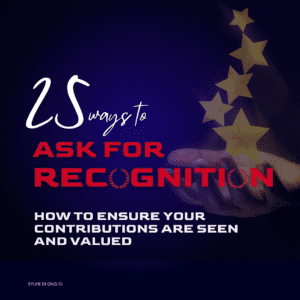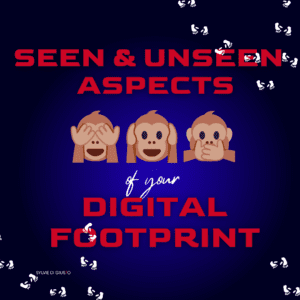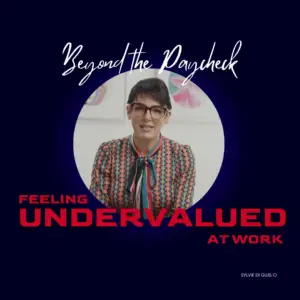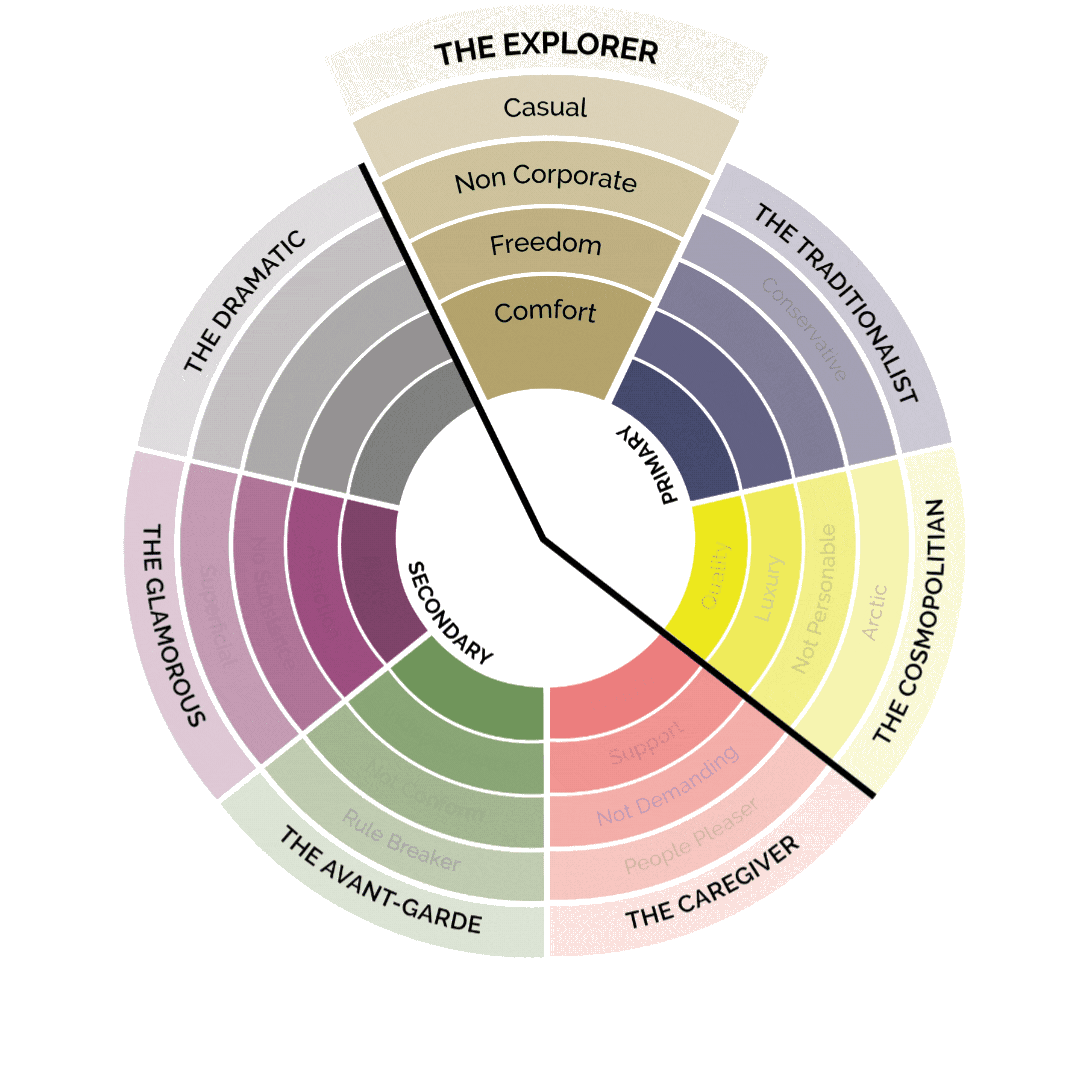STEREOTYPES AT WORK
How are you affected by the many stereotypes at work?
Our first impressions matter a lot, and in the professional world, we are often judged by our peers, bosses, customers or partners, and others before we can even speak. Particularly real is this when it comes to workplace stereotypes. Even though none of these may be true, perception is reality, and if someone has a preconceived notion about you, it can be challenging to change that perception.
The difference between stereotypes and prejudgments is perception.
- Stereotypes are beliefs about certain groups of people that may or may not be valid.
- On the other hand, prejudices are formed based on first impressions and a person’s perception of another individual, which may be influenced by stereotypes they have heard or read about.
Stereotypes surrounding gender, race, and age are among the most common stereotypes encountered by professionals in the workplace. Let’s dig a little deeper into this:
Gender Stereotypes at Work
At first glance, it may seem like gender stereotypes no longer exist in today’s professional world. After all, we live in an era of increasing equality and diversity, where women are shattering glass ceilings and men are taking on more caregiving responsibilities at home.
But despite these advances, there is still a perception that men and women are somehow inherently different, with specific gender stereotypes still holding sway in the workplace. These can range from perceiving men as more logical or analytical. This can also be the perception of women as overly emotional or too focused on the family over careers.
Gender Stereotypes in Leadership
Perhaps the most common stereotype that professional women face in the workplace is their perception as leaders. Whether it is a perception that they are not assertive enough or too emotional and therefore unfit for leadership roles, many women struggle against this perception. They think they have to prove themselves to others constantly.
To overcome these gender stereotypes in the workplace, you need to be confident in your abilities and not be afraid to speak up and take charge. You also need to actively work on challenging the perception that women are somehow inferior or less competent than men by proving yourself not just through hard work and dedication but also by supporting other women and mentoring them along the way.
Gender Stereotypes in Sales and Customer Service
But gender stereotypes can also be seen in other workplace areas, such as sales and customer service. For example, many men may assume that women are not good at negotiating or persuading others. In contrast, women may feel like they have to prove themselves more when it comes to their ability to sell products or services.
To overcome these gender stereotypes in sales, you must actively seek opportunities to prove yourself and show that you can succeed in a still often male-dominated field like sales. Whether by taking on more challenging accounts or being willing to put yourself out there and take risks, the key is not letting gender-based stereotypes hold you back from achieving your goals. And in customer service roles, gender stereotypes often come into play when dealing with clients or potential customers. For example, many men may be perceived as having more authority or being more credible than women. At the same time, women may face discrimination if they are seen as too “aggressive” or pushy.
To overcome these stereotypes in customer-facing roles, you need to be confident in your skills and abilities and not let yourself be intimidated or discouraged by others. You should also strive to build strong relationships with clients and customers, being approachable and understanding while maintaining a professional demeanor at all times. By doing so, you can prove that gender stereotypes are dead wrong when it comes to sales, customer service, and other professional areas.
Race Stereotypes at Work
At first glance, stereotypes may seem like harmless generalizations based on perception and perception alone. However, in the workplace, these preconceived notions can have a significant impact on professional success and reputation, for example, when it comes to racial stereotypes. Race stereotypes are a common perception of the various racial and ethnic groups in our society and are often based on false assumptions or negative attitudes about particular groups.
For example, many people may assume that all members of a particular race are lazy or unintelligent simply because of their race. However, these are just stereotypes—there is obviously no concrete evidence to support them, and they do not hold true for all people of that particular race.
Race Stereotypes in Leadership
While race stereotypes may affect all professionals in the workplace, they can be especially detrimental to those in leadership positions. For example, if a manager or executive is perceived as belonging to a particular race or ethnic group, colleagues and subordinates will inevitably view their decisions and actions through this lens. As such, leaders of color must constantly work to overcome these preconceived notions and ensure that race stereotypes do not unfairly tarnish their professional brand and reputation.
To overcome these stereotypes, you must be proactive in building your professional brand and reputation. This means actively managing perception, focusing on your skills and accomplishments, networking with others in your field, and communicating effectively with colleagues and clients. Additionally, it is essential to stay aware of the biases that may exist within yourself or your organization so that you can work to mitigate them and create a more inclusive, supportive workplace for all.
Race Stereotypes in Sales and Customer service
Race stereotypes can also significantly impact those in sales or customer service roles, such as customer representatives and account managers. These professionals must often deal directly with clients and customers from a wide range of backgrounds, so it is critical to be able to navigate these interactions effectively. At the same time, however, they must also be aware of the impact that race stereotypes can have on their work and take measures to prevent them from negatively affecting their professional relationships.
For example, if a customer perceives that the account representative they are working with is of a particular race or ethnic group, their perception and attitude towards them may be influenced by this perception. To ensure positive outcomes in these interactions, professionals in customer service need to understand how racial stereotypes can impact their work and take proactive steps to mitigate these effects.
To overcome these stereotypes, you must be proactive in your sales and customer service approach. This means building strong relationships with clients, understanding their needs and preferences, and effectively communicating with them throughout the process. Additionally, it is essential to stay aware of any biases or negative attitudes that may exist within yourself or your organization so that you can actively work to overcome them and create a more inclusive and productive environment for all. Overall, by being mindful of race stereotypes and taking steps to navigate them effectively, professionals can ensure that they are not victims of prejudgment or unfair perceptions in the workplace.
Age Stereotypes at Work
Perhaps one of the most common and prevalent is age stereotyping or the perception that certain groups of people are judged based on their relative age. This can take many forms in the professional world, from being perceived as too young or inexperienced to being seen as too old and out of touch. Regardless of whether these stereotypes are true, they can significantly impact your professional brand and réputation if you don’t address them head-on.
Age Stereotypes in Leadership
Whether it’s a perception that younger leaders are inexperienced and unable to take on more extensive responsibilities or that older leaders are too set in their ways and unable to adapt to new challenges, there can often be an unfair bias against those who fall outside of what is considered to be the “norm” in terms of age and leadership roles.
For example, if you are a young professional trying to climb the corporate ladder, it’s vital to be proactive in addressing any perception that you may not have the necessary skills or experience for specific leadership positions. This can involve building your professional brand through strategic networking, taking on more challenging projects, and seeking out mentorship opportunities from more seasoned professionals.
Likewise, if you are an older professional, you must be aware of any potential perception that you may not have the necessary skills or adaptability to succeed in today’s fast-paced business environment. This might involve focusing on your professional development, staying up-to-date with emerging trends and technologies, and working closely with younger colleagues to gain their perspectives and feedback.
If you face these types of stereotypes in your professional life, it’s essential to work on building your reputation as a competent and capable leader who can rise to any challenge. This may mean focusing on developing particular skills or areas of expertise seen as strengths and actively demonstrating your ability to lead and manage others effectively.
To overcome these stereotypes, you need to stay focused on your professional goals and priorities, stay committed to learning and growing as a professional, and build strong relationships with those around you. With time and effort, you can overcome any perception that may be unfairly holding you back in the workplace.
Age Stereotypes in Sales and Customer Service
Whether working in a sales role or providing customer service, it’s essential to be aware of some clients’ perceptions about specific age groups. For example, young people may be viewed as being more tech-savvy and able to provide better advice on products or services related to technology and social media. At the same time, older clients may be more receptive to advice from someone who appears to have more experience and knowledge.
To overcome these perceptions, you must stay focused on building solid relationships with your clients and understanding their needs and preferences. This might involve researching the client’s background or interests to understand their perception of age better and being flexible in adapting your approach based on feedback from your team or colleagues. With patience, dedication, and a commitment to delivering high-quality results, you can overcome any perception that may unfairly hold you back in your professional life.
Are you facing any of these stereotypes at work? Let me know. You can always reach out to me. It’s really me on the other side!
Stereotypes at Work in a Nutshell
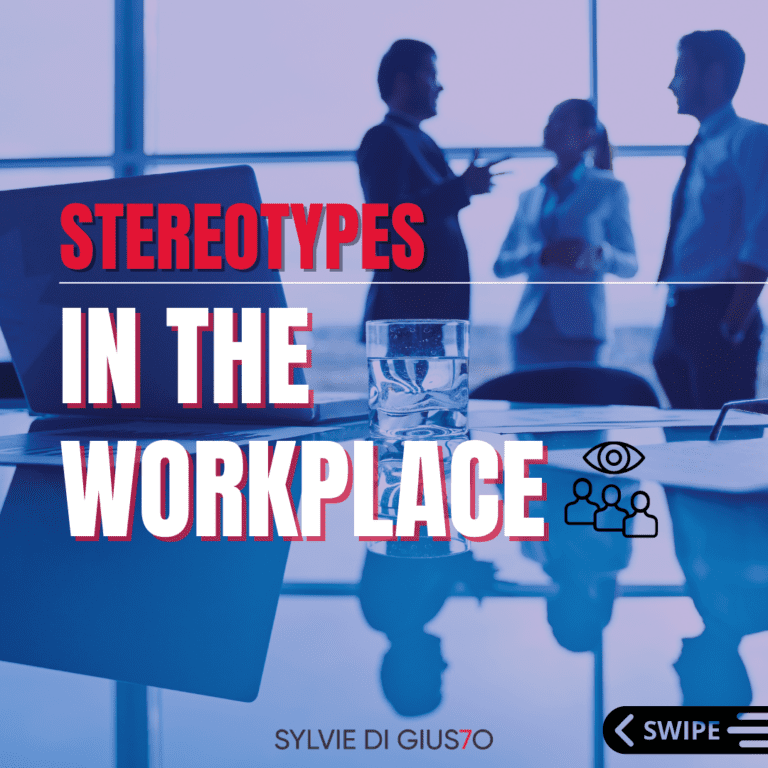
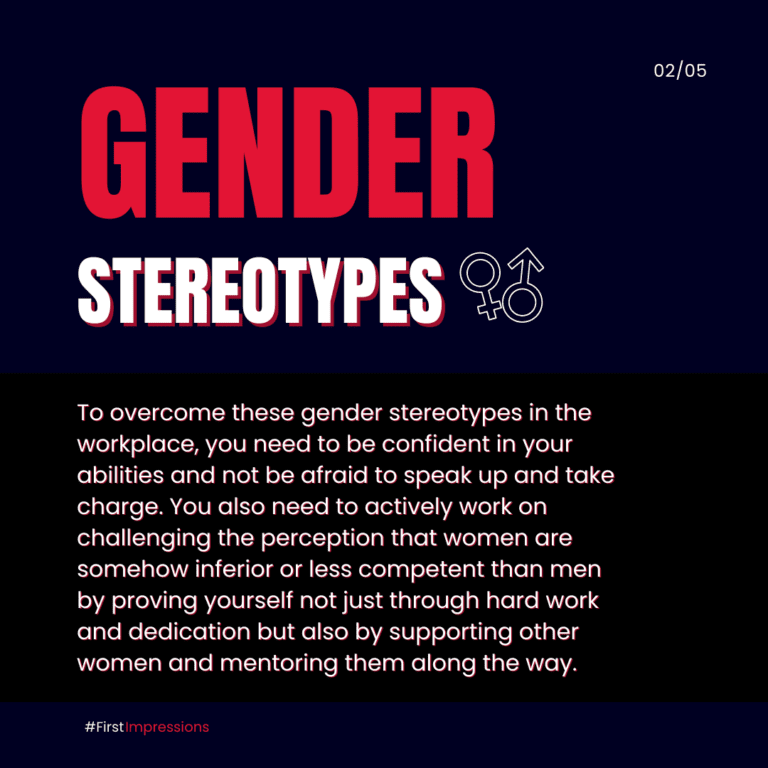
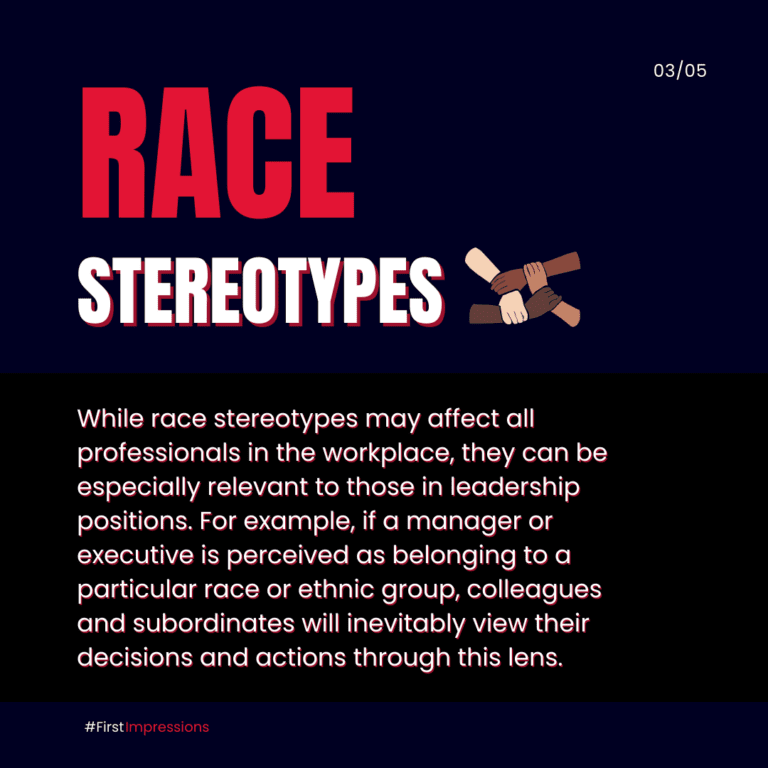
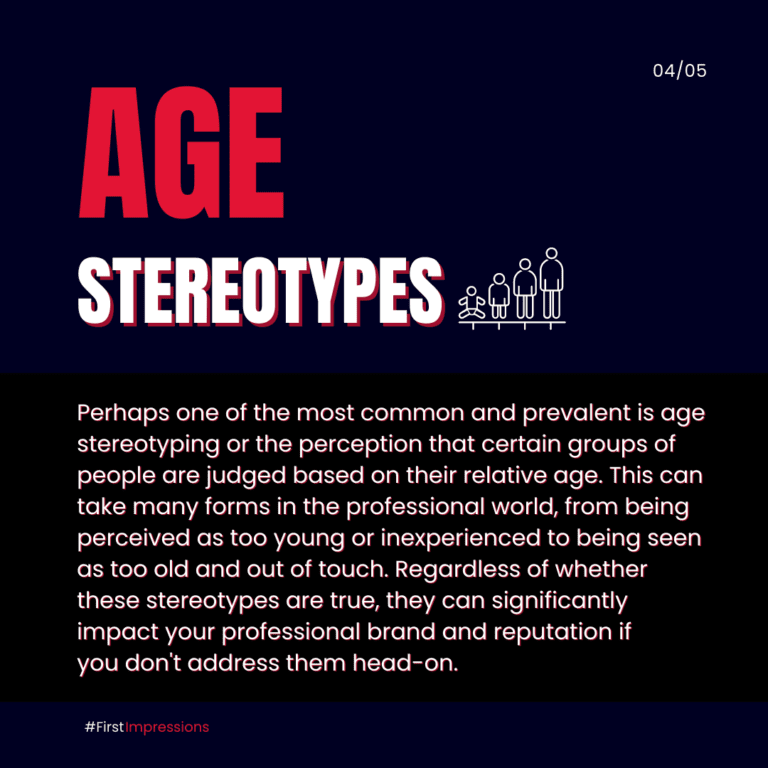
PS : Intéressé par plus de contenu comme celui-ci ? Ne manquez pas d'aller sur Suivez-moi sur Instagram. C'est là que je visualise et publie mes pensées quotidiennement. J'espère vous y voir.
